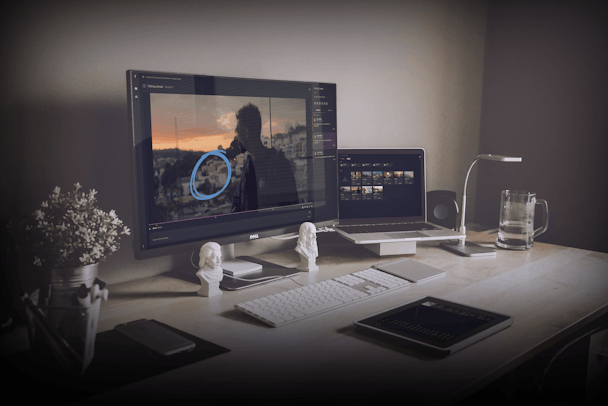Six ad tech trends that will impact your creative team's day-to-day
Advertising is more personalised than ever thanks to the advances we’re seeing in technology. This relieves the pressure on marketers but could lay it on thick for creatives.

Six ad tech trends that will impact your creative team
Technology continues to alter the way that we produce and experience content. New platforms emerge every year. 5G is set to disrupt the way we interact with our hardware. AI is on the cusp of delivering more personalised advertisements than ever before.
It’s an exciting time for advertisers, who have access to increasingly more options with which to push the success of their campaigns.
But there’s also a negative aspect to consider. There’s one area that technology cannot yet usurp from human hands: right-brain creative thinking. In that respect, the advent of augmented personalisation and omnichannel marketing could mean more work, shorter deadlines and higher quality expectations for creative agencies and in-house teams.
More video than ever before
Global digital advertising spend is set to reach 50% of the total by 2020. Expect a great deal of that to funnel into video thanks to Gen-Z, who currently watch 68 videos per day. Advertisers are flocking to the medium: brands like Hennessy are taking things to the next level and companies like Mailchimp are getting in on the game. Video is blooming. And someone has to take point on creating that content.
Mobile advertising, shorter ads
Some campaigns will expand, others will continue to shrink. Expect $93bn spent on mobile-first ads in 2019 ($20bn more than television.) Ads are getting shorter and less skippable to address attention spans withered to near non-existence. That's a challenge for creatives. It's easier to tell a story and elicit an emotional response in a sweeping cinematic epic; not so much in a 15-second bumper ad.
Add vertical video to the mix (as brands seek to tap into Facebook's 8bn daily video views, 70% in-stream ad watch completion and shoppable Instagram stories) and creatives have another challenge to consider as they keep pace with the demands of mobile.
5G is here – and it’s spreading
High speeds, longer battery life and increased responsivity are just the tip of the iceberg. In the new, connected world the freezer door may be as important to the marketing mix as the television. Creatives will need to consider new formats that could include thermostats and smartwatches; the increased quality expected from 5G; and how to make something of value on such devices in an already ad-saturated world.
Omnichannel marketing means new thinking
The future of omnichanel marketing means more than Instagram Stories and search ads. If brands are to stay hyper-relevant they must consider the year-over-year growth of Amazon and Pinterest; the advent of TikTok; Gen Z favourites, Twitch and Discord; games like Fortnite, which are now social media networks unto themselves. Why not throw AR into the mix, with revenues predicted to jump from 2018's $428 million to $2.6 billion in 2021. Omnichannel will mean so much more in the years to come. It’s the creatives who must tailor their ideas to the unique features of each new emerging channel.
The revolution will be televised
8K is quite literally big news: some 500,000 8K TVs will ship globally in 2019. There’s more room to watch, but less to hide: ultra-crisp creativity will be a necessity for 8K campaigns. But that’s not the only challenge facing creatives. There were 33 million "cord cutters" in 2018. Netflix, Amazon Prime, Hulu and their ilk have been immune to advertising before now, but with that many consumers renouncing linear TV adverts are sure to follow. Advanced analytics and no ad blockers make for a potential lucrative platform. Brands must revamp models, rethink approach and diversify OTT ads to target the segmented audiences they'll have access to. Again, much of that obligation comes down to creatives.
AI advertisers
AI is bringing advanced predictive personalisation closer than any other tech trend: solutions like Dynamic Creative Optimisation are already helping to relegate tasks like split A/B testing to the past. But for all the efficiencies, there remains the question of creative. AI can't imagine and design campaigns (yet), so human input could be significant. Creative teams will need to keep pace with number-crunching AI as it identifies new personas and creative variations are required to speak to those increasingly defined segments.
A final thought
Advertising and technology have always gone hand in hand, and it's a double-edged sword. Tech empowers more visible campaigns, but in turn clients expect more agility, speed and efficiency. Those that invest in new tech to expand the reach of their work (and that’s a necessity) must extend that innovation to their creative team. They need the latest tools to match the demands of higher resolutions, more platforms and increased output. This is more true than ever as we move into a new generation of tech-powered advertising.
Make sure the tech your creative teams use to create, discuss and review their work evolves alongside the tools used to distribute it. If not, they will struggle to keep pace in today's rapidly shifting landscape.
Ftrack develops ftrack Review, a platform for review, feedback and approval on media, and ftrack Studio, a project management and production tracking tool for creative teams. See tweets at @ftrackhq

